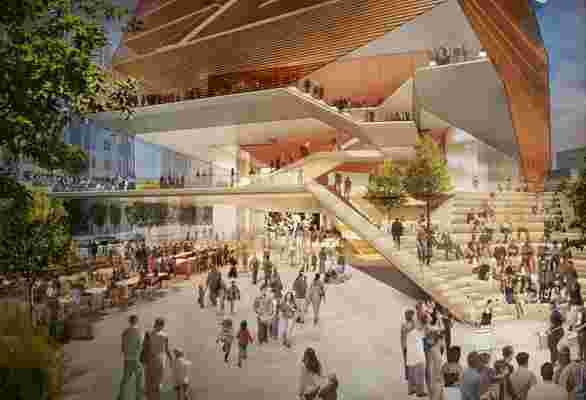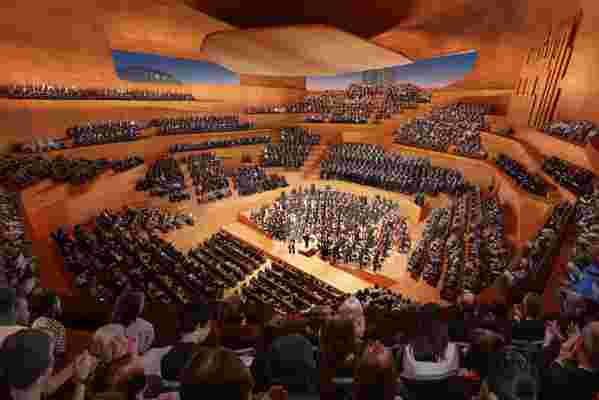May 23,2022
Diller Scofidio + Renfro Unveils a Beautiful Design for the London Center for Music
by David Stewart
Few people would debate London's cultural primacy—along with Paris and New York, London contains some of the best art museums, most dynamic skyscrapers, and trendiest fashion of any city in the world. Yet the one cultural currency the city was sorely lacking was a world-class music center. Until now: Earlier this week it was announced that the New York–based firm DS+R will design the London Center for Music.
"The new building will rightfully place London on the same level with the likes of Hamburg , Paris, and Los Angeles, as cities which have created spectacular new cultural concert halls," says Ben Gilmartin, a partner at DS+R. The project will be located within London's Barbican Center, a large swath of land filled with various Brutalist buildings that host classical and contemporary music concerts, theater performances, film screenings, and art exhibitions. Historically, however, the Barbican has been overshadowed by other cultural juggernauts in the city such as the Tate Modern and The National Gallery. The London Center for Music could change that dynamic. "The campus has a rich offering of music and theater, making it one of the great cultural campuses of the world," says Gilmartin. "Some of those offerings haven't been as visible to many visitors or Londoners. We're confident that the creation of this building can change that."
One of the Barbican's most defining features is the Highwalk, an elevated pedestrian network linking several cultural buildings (somewhat similar to New York's Highline, though not as verdant as the Manhattan landmark). The new London Center for Music will be nestled into the southern tip of the Barbican's grid. However, that area has always been extremely isolated for pedestrians, mainly due to a traffic rotunda that loops around the southernmost point. DS+R's design will remedy that—in fact, allowing the public simplified access to the London Center for Music might have been the impetus that convinced officials to award DS+R the bid. "We took the risk of proposing a building that actually bridged over a realigned roadway that passed underneath," says Gilmartin. "But it was this decision that unlocked the way to make public access easy and efficient. During the competition phase, we were up against some of the toughest competition in the world. We think this was one of the major design decisions that really allowed us to stand out against the rest." (DS+R beat out Foster + Partners, Gehry Partners, Renzo Piano, and Snøhetta, among others, to win the bid).

Easy public access into and out of the building was crucial to DS+R's winning the challenging competition.
Though the building will house several venues for various performances, it's the main concert hall that steals the show. The room will seat 2,000, yet every patron will feel as if they have the best view in the house due to an in-the-round seating arrangement. "We decided to implement a surround hall, which is distinguished from the traditional shoe box shape of a concert venue," Gilmartin explains. "This means it's a different kind of experience, one in which everyone is able to be closer to the musicians. It also makes a community of the audience, as their reactions becomes part of the experience."

Surround-hall seating allows for a more democratic experience for all patrons.
Construction on the new music center depends on when the current resident anchoring the southern tip of the Barbican can move. The Museum of London, which currently occupies that space, will eventually be moving to Smithfield Market, an area about a half-mile west of the Barbican. "Once the site becomes available for construction, we are hopeful that construction will take about four years to complete, which will likely put the complete date around the mid to late 2020s," says Gilmartin. Whether the building is completed in 2022 or 2026 seems rather moot considering that within the next decade, London will add yet another feather to its already vibrant cultural hat.






